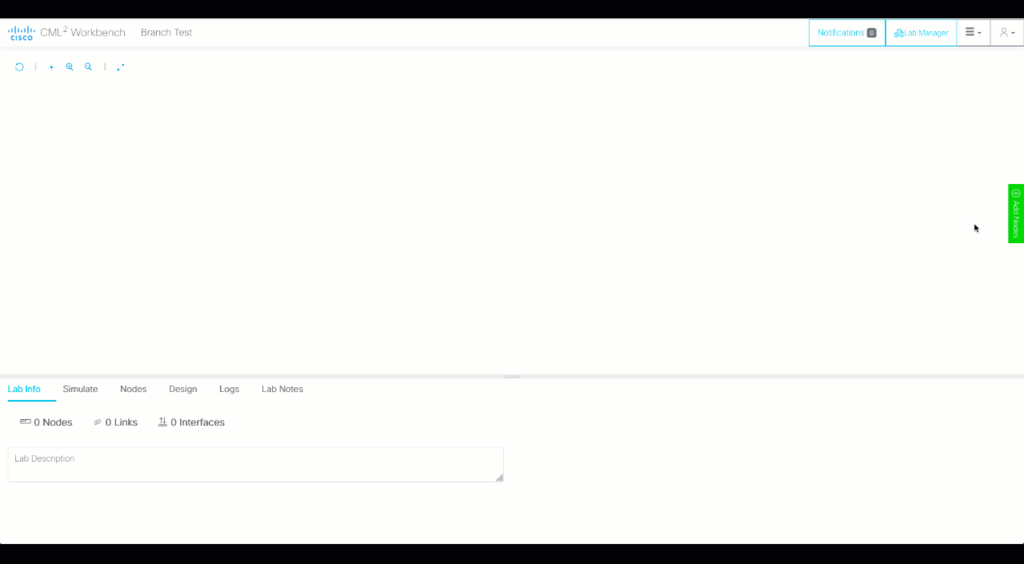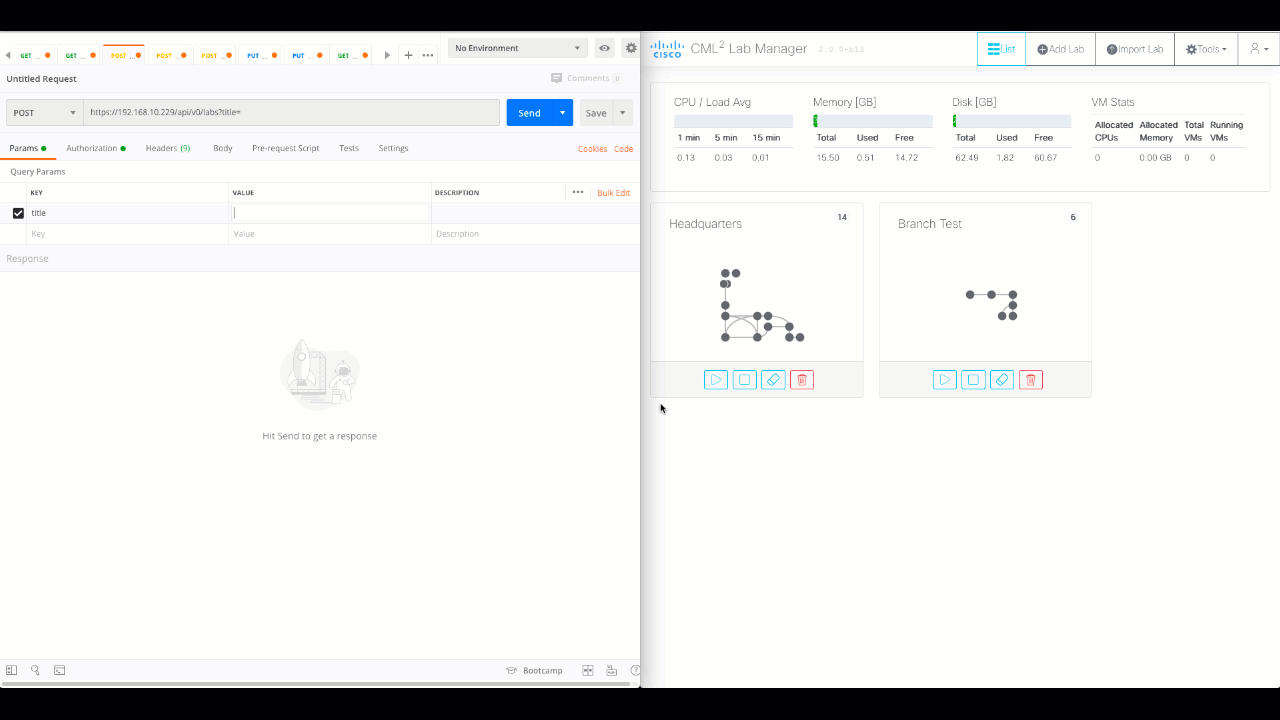Cisco Modeling Labs – Enterprise v2.0 is here, sporting a complete rewrite of the software and a slew of cool, new features to better serve your education, network testing, and CI/CD automation needs. Version 2.0 still gives you a robust network simulation platform with a central store of defined and licensed Cisco IOS images, and now it also provides a streamlined HTML5 user interface with a lean backend that leaves more resources free to run your lab simulations.

This attention to streamlining and simplification extends to installation and getting started as well. You can install and configure Cisco Modeling Labs – Enterprise v2.0 in no time. And you’ll be building labs in as little as ten minutes.
As you use Cisco Modeling Labs to virtualize more and more network testing processes, topologies can grow quite large and complex. This can strain host resources such as memory and CPU. So after the nodes start, the Cisco Modeling Labs engine uses Linux Kernel same-page merging, or KSM to optimize the lab memory footprint. KSM essentially allows Cisco Modelings Labs to deduplicate the common memory blocks that each virtual node’s OS uses. The result? More free memory for labs.
API First
The HTML5 UI only scratches the surface of what’s new. Cisco Modeling Labs – Enterprise v2.0 is an “API first” application. Each of the operations performed in the UI – adding labs, adding nodes, positioning nodes on a topology canvas, creating links, starting up a simulation, and so forth – are all powered by a rich RESTful API. With this API, you can tie Cisco Modeling Labs into network automation workflows such as Infrastructure as Code pipelines, so you can test network configuration changes before deploying them in production.

To make it even easier to integrate Cisco Modeling Labs – Enterprise v2.0 into your NetDevOps toolchains, the software includes a Python client library to handle many of the lower-level tasks transparently, allowing you to focus on the fun bits of putting network simulation right into your workflows. For example, the client library already drives an Ansible module to automate lab creation and operation.

Flexible Network and Service Integration
Sometimes your virtual lab needs to talk to physical devices in the “real” world. Cisco Modeling Labs – Enterprise v2.0 makes it simple to connect virtual topologies with external networks in either a layer 3 network address translation (NAT) mode or a layer 2 bridged mode. In bridged mode, the connect node shares the Virtual Network Interface Card (vNIC) of the Cisco Modeling Labs VM. So nodes can participate in routing protocols like OSPF, EIGRP, and multicast groups, with physical network elements and hosts. This lets you integrate external services and tools with your virtual labs. For example, an external network management application can monitor or configure your virtual nodes.
But you can also clone some of these services directly into your virtual labs. Cisco Modeling Labs – Enterprise v2.0 includes images for Ubuntu Linux, CoreOS, and an Alpine Linux desktop. With these, you can run network services, spin up Docker containers, and drive graphical UIs directly from Cisco Modeling Labs. Don’t want to use the web interface to access consoles and Virtual Network Computing (VNC)? Cisco Modeling Labs includes a “breakout tool” that maps ports on your local client to nodes within a lab. So you can use whatever terminal emulator or VNC client you want to connect to your nodes’ consoles and virtual monitors.
With all these cool new features and all this power what will you automate, learn, and test with Cisco Modeling Labs – Enterprise v2.0?
Read more at Cisco Modeling Labs or try it out for free in our Sandbox environment.
Visit the new Developer video channel and let us know via Twitter the topics you want us to cover.
We’d love to hear what you think. Ask a question or leave a comment below.
And stay connected with Cisco DevNet on social!
Twitter @CiscoDevNet | Facebook | LinkedIn
Visit the new Developer Video Channel

This is great and all good. But some basic features are still missing, interfaces Ids labels, loopbacks and linknets addresses. These will make the workflow much more efficient.
When they have more developers and it will be exposed.
Is there an upgrade path for licensed VIRL 1.x users?
Yes, there is. The PAK license can be converted to Smart.
Awesome blog Joe – thanks!
is it in the roadmap to support #iosxe on the switch platform, aka simulate #cat9k in #cml2?
Not formally yet, but this is something being discussed. There’s lots of interest on this. Today, you could add the Cat9800 image from Cisco.com into CML as a custom image.
Learning milestone !!
Where and when will a CML Enterprise resource calculator be released, or can we continue to use the CML 1.x version?
Product management is actively working on updating this, but you can continue to use the 1.x version knowing it will overestimate resources since OpenStack is no longer being used in the backend. You can give yourself a few extra gigs of RAM toward simulations based on what the 1.x calculator tells you.
Excellent! Thank you!
I install CML 2.0 but, there is no IOS devices and nodes in the lab manager, how do I get that?
You need to make sure that you also attach the refplat-xxxxx.iso to your VM when you start it up.
I have set up the product within vmware fusion pro however i’m getting a licensing issue. I’m registered and purchased the product but Smart Software Licensing states I’m “Out of Compliance”.
Under License Usage Status:
The Virtual account containing this product instance has a shortage of this license type.
Has Cisco looked at supporting CML in an environment without hardware virtualization? With the addition of WSL2 using Hyper-V, and Docker for Windows using WSL2 underpinnings, there’s a great opportunity for synergy here. Currently this doesn’t work because CML requires the hardware virtualization checkbox in VMWare workstation.
I’m trying to create a demo, using CML 2, orchestrated by Ansible AWX backed by NetBox running in a docker container that can then be interrogated with PyATS to show how that works. If you don’t require hardware virtualization this could all run on a windows 10 laptop!
Technology is very difficult….. Safe our file…. Network is completely different…. Sometimes I am design for atomix gaming.
Best graphics ?….
32.42 networking…. With different design completely working
Best network…. Run not possible without Cisco router for all work I am very happy for work my program….. I am live in chattisgarh
1 I am best networking event
For all types of network….
Without cicsco router not possible work network…….
Pubg
Call
Of
Duty
Google apps
Android apps
Nokia
Samsung
Vivo
All types phone our PC
Help me for best program.. I am ready for all types work
Cg13rgh near at rajmahal